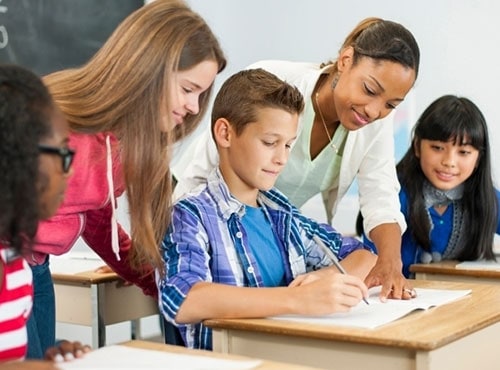
Creating relationships with my students is important. Many of my students have hard lives.
I know the effects of poverty and trauma and want to be sensitive to my students’ experiences.
My students earn positive rewards. I want to “fill them up” and build our relationship. But some students have disruptive behaviors. I’m told to use consequences. Should I really take away rewards they’ve earned?
But I love my students. I know the effects of poverty and trauma and want to be sensitive to my students’ experiences. I want to create, not erode Student/Teacher relationships.
How do I reconcile all these principles that at times seem to oppose each other?
What do I do?
I need a road map and a plan.
- Lead with love and lean heavily on empathy.
- Build relationships by being predictable and consistent. Children learn best from those with whom they have a positive relationship. This is just one protective factor that helps mitigate the effects of risk factors.
- Recognize that all moments are an opportunity to teach.
Our students need intentional teaching. Many have hard lives. Plus, they’re children. They’re developing and learning (positive and negative) lessons all the time. We do students no favors by stopping after love, empathy, and relationships. Someday students will be set free in the world. And navigating the world is difficult. They need instruction- from us- on how best to do so.
Lead by example and modeling. Treat colleagues, students, families, and community members how we want students to treat others. Lead by example and modeling. Do so out of having a heart for kids.
Directly teach students skills and behaviors they need to be successful in and out of school. Do so out of having a heart for kids.
Explicitly teach pro-social life skills and behaviors. A trauma-informed model recognizes when students are using “functional behavior”- behavior that has served a purpose in one area of their life but is not necessarily adaptive. (Think about a student who argues when told no. Often arguing is the most successful way they’ve gotten adults in their life to listen to their point of view.) Use explicit instruction to teach students what to do when they’re…told no, given an instruction, are rejected by a classmate, etc.
Teaching students coping skills. Many students have experienced trauma and struggle interacting with others and/or making positive choices for themselves. Life can feel overwhelming and they might express their big emotions and frustration in a variety of maladaptive ways. Teach students calming and coping skills to help them be successful at school and life. Do so out of having a heart for kids.
- Consequences are important.
Use positive consequences - especially praise. A Consequence is the outcome of a behavior, which influences whether or not that behavior is likely to occur again in the future. Praise is the most powerful positive consequence. what they’re doing well. Tell them with your words, show them with your facial expressions and body language. Have students praise each other. We do children no favors if they get our attention more from undesired choices than from desired choices. Use positive consequences, especially praise. Do so out of having a heart for kids.
Correct students. Lead with love and empathy. All moments are an opportunity to teach. We do children no favors if we allow them to continue negative behavior without correcting them. Teach children we care enough about them to not let them behave in maladaptive ways and that we care enough to teach them a better way. Children learn all the time and it’s imperative that they learn skills and strategies that will help them to be successful in school and in life. We correct in many ways: the look, the head nod, a quiet conversation to talk about a better way next time, redoing/undoing, and more. All are corrections. All are meant to teach a better way, not to harm. We correct children with the hope that the behavior reduces over time, which means they serve as a negative consequence. Correct children. Do so out of having a heart for kids.
Use negative consequences. Negative consequences are an outcome that a child will work to avoid. This might include a short quiet conversation to talk about returning what was taken, temporarily moving to a different seat, losing a reward point, redo/undo, and more. Lead with love and empathy. All moments are an opportunity to teach. We do children no favors if we save them from negative consequences because life has negative consequences and we are teaching them to navigate successfully. (If I speed in my car, I pay a ticket, losing money I earned. Choices have outcomes.) Use negative consequences. Do so out of having a heart for kids.
All are methods of teaching- being a role model, direct skill teaching, using positive consequences- especially praise, using negative consequences, correcting children, and teaching of coping skills. We can’t only understand that students have hard lives. We have to teach them how to navigate through. We are teachers. That’s our game. We teach, reinforce pro-social skills, correct maladaptive skills, use positive consequences- especially praise, use negative consequences- sometimes letting students know they’ve lost a reward, and re-teach pro-social skills and behaviors. Because that’s what builds resiliency in our students. In the words of Carol Dweck, “Create hearty kids.”
Download our Relationships & Consequences Roadmap for a quick reminder to post in the classroom.
